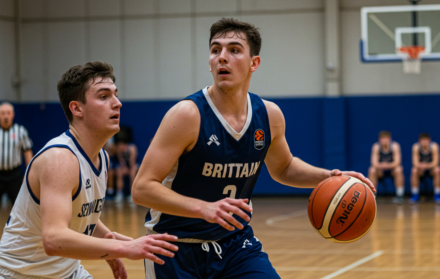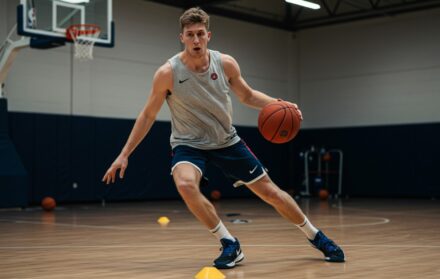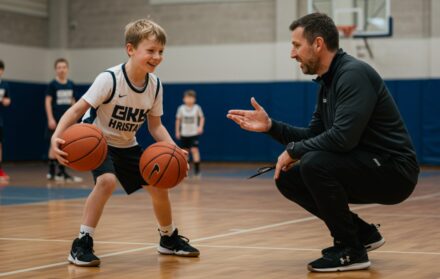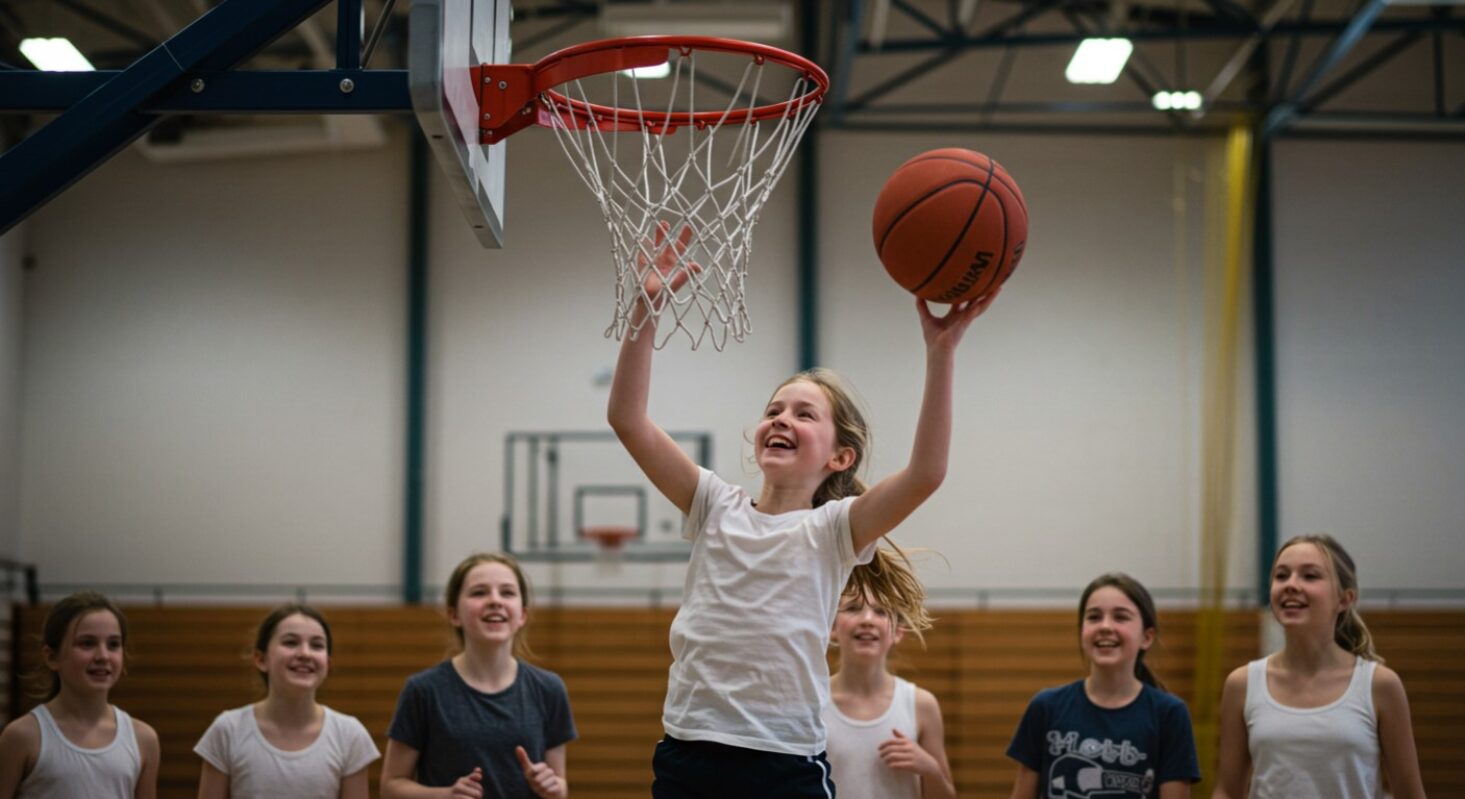
What’s the Best Age for Kids to Start Basketball Training?
Walk into almost any schoolyard or community park, and you’ll see a basketball hoop. It might be a full-sized rim with kids launching shots from way outside their range, or a smaller hoop where younger children are giggling as they try their first layups. Basketball has a unique appeal: it requires minimal equipment, can be played indoors or outdoors, and combines skill, teamwork, and creativity. Unsurprisingly, parents often find themselves asking the same question: When should my child start basketball training?
This is not just a matter of age. It’s about physical readiness, emotional maturity, and—perhaps most importantly—whether the child actually enjoys the game. Some parents fear that starting too late will leave their child behind, while others worry that early training might put them under pressure or lead to burnout. This article explores the developmental stages of childhood and how they relate to basketball, offering guidance on what kind of training is best at different ages, what signs show a child is ready, and how to keep the experience positive.
The Role of Age in Sports Readiness

Children don’t all grow at the same pace. One eight-year-old may have the coordination to dribble confidently and understand basic game concepts, while another of the same age may still struggle to bounce the ball with control. That’s why the “best age” to start basketball isn’t a universal number but rather a combination of readiness factors.
-
Physical development: Can the child run, jump, and change direction with reasonable balance? Do they have enough hand–eye coordination to catch and throw a ball? Just as important, are they getting the right fuel from a balanced diet to support that growth and activity?
-
Cognitive ability: Are they able to focus for 15–20 minutes at a time? Can they understand simple instructions and rules?
-
Social maturity: Do they enjoy playing with other children, sharing the ball, and listening to a coach or adult leader?
Coaches and child development experts agree: the right time is when the child shows signs of interest and capability, not when parents feel pressured to get them on a team. A supportive environment that emphasises fun and progression is far more valuable than a head start measured only in years.
Very Early Ages (5–7): Fun and Introduction
For children under eight, “basketball training” shouldn’t mean structured drills or fitness circuits. At this stage, the goal is exposure through play. Small, fun activities build coordination without overwhelming the child.
-
Mini-hoops and smaller balls: Junior-sized basketballs are easier to grip, while mini-hoops let children see success when they make a shot. That little thrill encourages them to keep playing.
-
Play-based games: Dribbling while chasing balloons, running relays while bouncing the ball, or simple passing games with parents or friends.
-
Motor skill development: These years are about agility, balance, and coordination, not tactics. Jumping, skipping, and catching games are as useful as dribbling drills.
Pushing too hard here can backfire. A six-year-old who feels pressured into hour-long training sessions may lose interest altogether. But a child who enjoys basketball as a fun activity develops a natural enthusiasm that can be harnessed later.
Primary Ages (8–10): Building the Basics
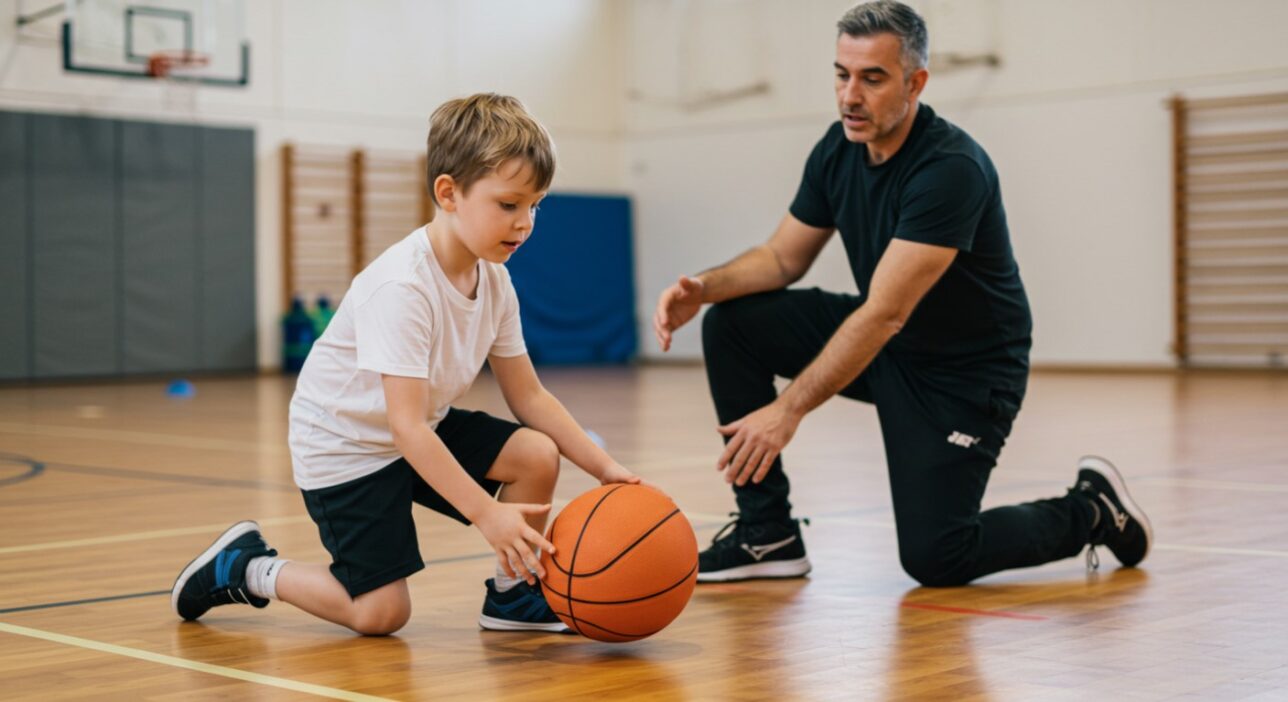
This age bracket is widely considered the sweet spot for starting structured basketball training. Most children in this range are physically coordinated enough to handle basic skills, able to follow rules, and socially mature enough to enjoy teamwork.
Coaches often introduce:
-
Dribbling fundamentals: Moving with control using both hands, zig-zag cone drills, dribble-and-stop exercises.
-
Passing practice: Chest passes, bounce passes, and simple moving drills that stress accuracy.
-
Shooting form: Instead of long-range shots, focus is placed on stance, balance, and layups.
-
Small-sided games: Playing 3-on-3 or 4-on-4 helps children get more touches of the ball, keeps them engaged, and reduces complexity.
This is also the time many kids join beginner leagues or “mini-basketball” programmes, where the court size, ball size, and even rules (like no full-court press) are adapted for development. The aim is not to win trophies but to help children fall in love with the game while building a foundation of skills.
Pre-Teens (11–13): Skill Development and Strategy
The transition from childhood to early adolescence is a pivotal stage. Players begin to refine the basics and are capable of understanding team strategy and positional play. At this stage, children often experience a growth spurt, which can temporarily disrupt coordination, but also allows for rapid skill development if training is adapted correctly.
-
Advanced drills: Incorporating crossover dribbles, passing under pressure, and shooting after movement.
-
Defensive awareness: Learning stance, footwork, and how to guard opponents without fouling.
-
Tactical thinking: Understanding spacing, when to pass versus shoot, and simple offensive plays.
-
Physical training: Still no heavy weights, but agility ladders, jump rope, and core exercises begin to complement basketball drills.
This stage is often when young players begin to take basketball more seriously, and many join competitive school or club teams. Coaches need to balance technical progression with maintaining enjoyment, since overemphasis on results can push players away just as their skills are blossoming.
Teens (14+): Competitive Play and Higher Training Loads

By the time players reach their teenage years, basketball can become highly competitive. Training now involves greater intensity, longer sessions, and preparation for performance under pressure.
-
Specialisation by position: Guards refine perimeter play, centres work on rebounding and post moves, and forwards polish versatility.
-
Strength and conditioning: Supervised gym sessions introduce resistance training for injury prevention and performance.
-
Game analysis: Teen players start watching more games, breaking down tactics, and analysing their own play via video.
-
Mental toughness: Coaches emphasise handling pressure in competitive leagues, balancing schoolwork, and developing resilience after losses.
For those aiming to play at higher levels—whether for schools, academies, or national youth squads—this is where the pathway becomes serious. Others may simply enjoy playing recreationally. Both are valid outcomes, and the role of parents and coaches is to respect the child’s choice.
Age Group Training Focus Table
| Age Group | Training Focus | Example Activities & Drills | Key Goals |
|---|---|---|---|
| 5–7 (Early Ages) | Fun introduction, playful exposure | Balloon dribbling, mini-hoop shooting, and tag with a ball | Build coordination, enjoy the game |
| 8–10 (Primary Ages) | Basics of skills and rules | Cone dribbling, partner passing, layup lines, 3v3 mini-games | Develop fundamentals, teamwork, and confidence |
| 11–13 (Pre-Teens) | Skill development and strategy | Crossover dribbles, defensive stance drills, and small play setups | Improve technique, learn tactics, build fitness |
| 14+ (Teens) | Competitive play and conditioning | Position-specific drills, scrimmages, strength training, and video analysis | Prepare for school/club teams, resilience, and mental toughness |
Factors Beyond Age: Signs a Child is Ready

Age is a guideline, but readiness is individual. Some signs that a child is ready for basketball training:
-
They consistently show interest in playing, not just occasionally.
-
They can listen to and follow instructions without constant redirection.
-
They enjoy working with peers, even if competition isn’t the main motivator.
-
They can manage frustration—missed shots or lost games don’t lead to meltdowns.
If a child ticks these boxes, structured training will likely be beneficial, whether they are seven, nine, or twelve.
Risks of Starting Too Early or Too Late
There’s no perfect age, but there are risks at both extremes.
Too early (before 7–8):
-
Burnout: children may tire of structured training before adolescence.
-
Frustration: oversized equipment and complex drills can make them feel inadequate.
-
Injuries: young bones and joints aren’t suited to repetitive strain.
Too late (after 13–14):
-
Catching up: peers who started earlier may have better fundamentals.
-
Reduced opportunities: school or club teams often expect prior experience.
-
Confidence issues: joining the sport late can make a teen feel behind.
That said, late starters can still succeed. Many high school players pick up basketball at 14 and go on to compete seriously. The key is motivation and supportive coaching.
Parental Role in Supporting the Journey
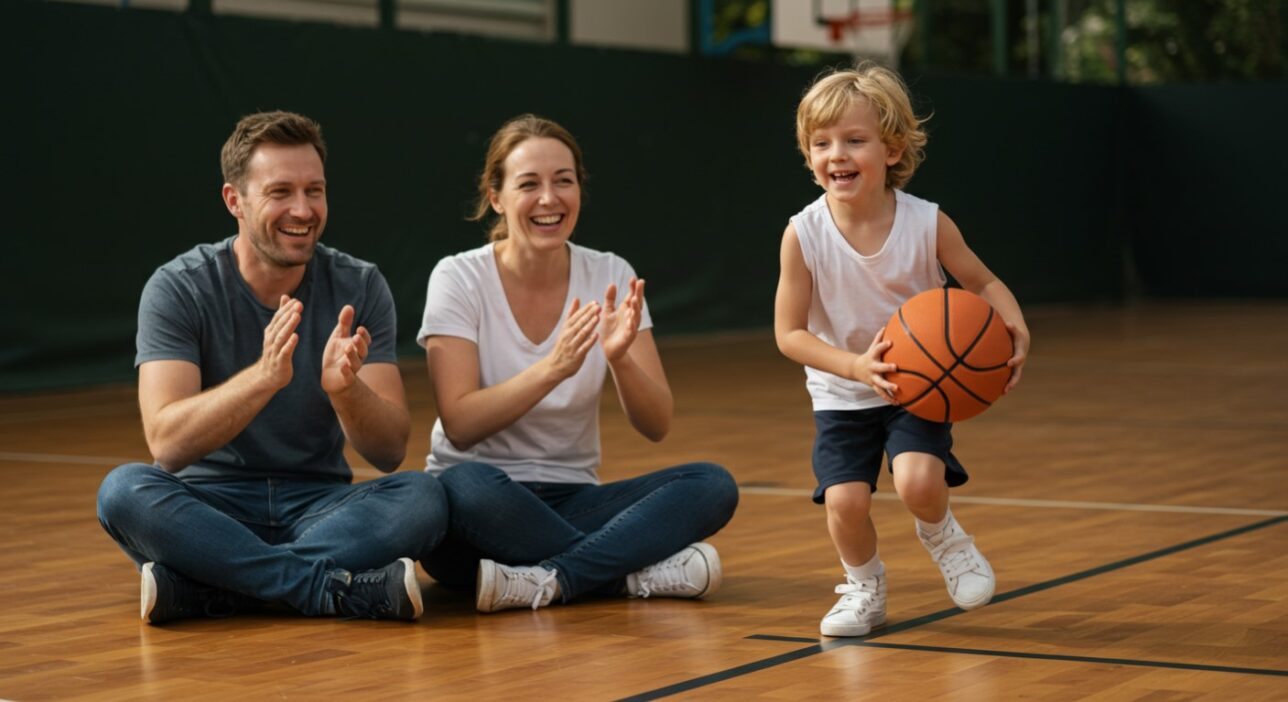
Parents have enormous influence, not only by enrolling children in training but also through the attitude they bring to sport.
-
Encouragement, not pressure: Celebrate effort and enjoyment, not just results.
-
Providing opportunities: Buying a junior-sized ball, putting up a hoop in the driveway, or taking kids to watch live games.
-
Modelling balance: Helping children manage schoolwork, training, and rest.
A parent who says, “I love watching you play,” does more for their child’s confidence than one who only comments on missed shots.
FAQs : Best Age for Kids to Start Basketball Training
Is six too young for basketball?
Not too young to play, but too young for formal training. At six, keep it playful—mini-hoops, balloon games, fun dribbles.
What if my child just wants to play casually?
That’s perfectly fine. Basketball doesn’t have to lead to competition. Casual play still builds fitness and social skills.
Should kids play multiple sports first?
Yes. Many experts recommend that children under 12 sample different sports to build varied coordination and avoid overuse injuries.
Does height matter at this stage?
Not really. Skills, coordination, and passion matter far more in youth development. Height becomes an advantage later, but it shouldn’t define whether a child starts training.
Conclusion: Finding the Right Age Is About Readiness, Not Numbers
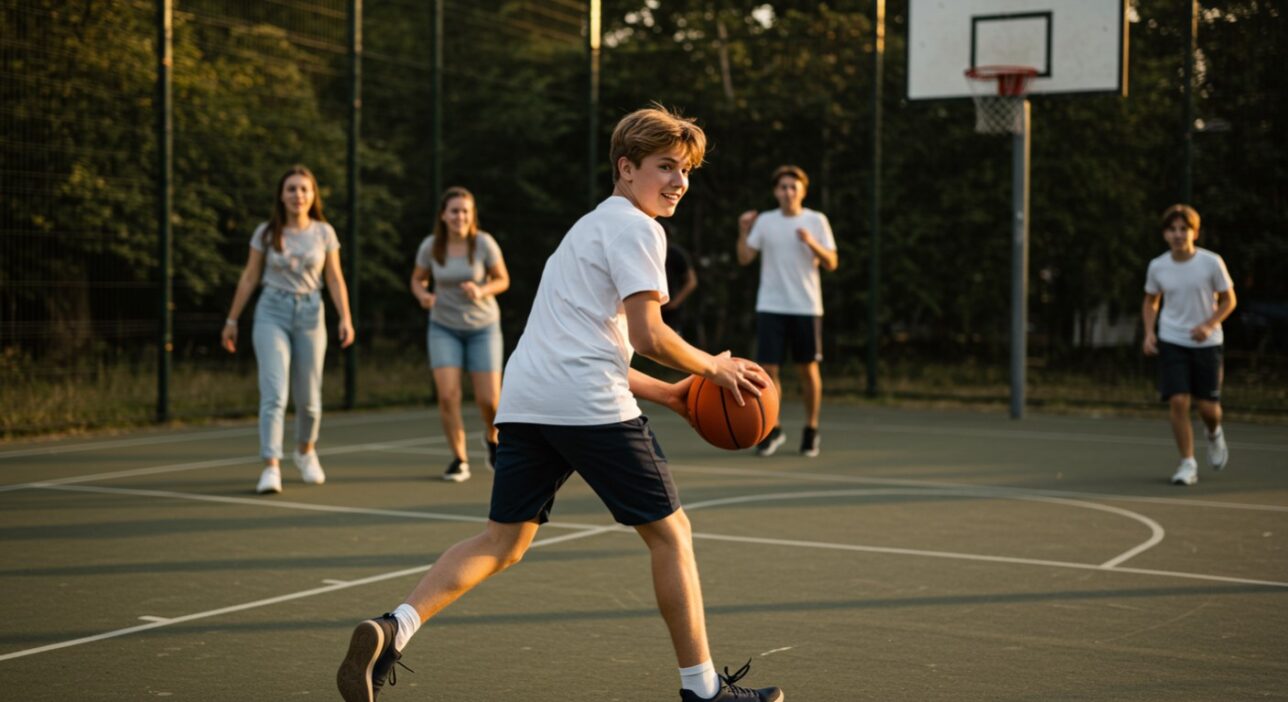
So, what’s the best age for kids to start basketball training? For most, the sweet spot is 8–10 years old, when physical readiness, cognitive ability, and social maturity align. Younger children can and should play basketball for fun, developing coordination and confidence without pressure. Older beginners can still thrive if they have motivation and access to good coaching.
The key message: age is less important than readiness and enjoyment. With the right support, basketball can teach lifelong skills—discipline, teamwork, and resilience—alongside the joy of playing the game. For parents, the role is not to rush or delay but to create the conditions where a child feels free to bounce that ball, take that shot, and discover a sport that might become a passion for life.


